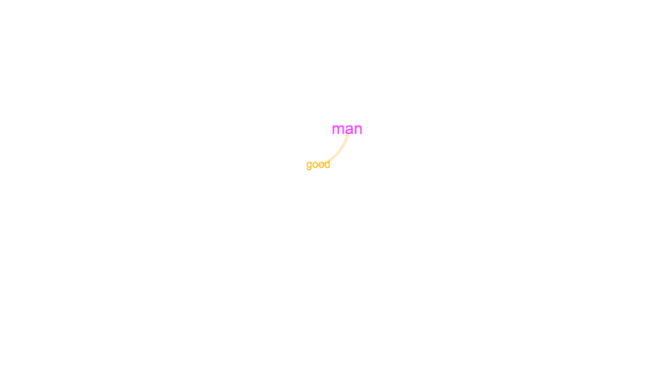The Eighteenth-Century Family
This animation represents the emotional network of the family in the eighteenth-century novel. It measures the co-occurrence of emotions and family members within sentences in a sample of eighty novels in English published between 1750-1800. It begins with the most strongly weighted connection (“man”-“good”) and then gradually grows to include the entire network. Overall what is striking about this network (compared to the general emotion network) is the high degree of heterogeneity of emotions surrounding family members. I had expected far clearer divisions, but while the eighteenth-century family does have a fairly coherent core, it’s larger network appears to involve quite a range of emotions. Families have been complicated for a long time.
Some notable moments to look for:
– the opening dyad of “man” and “good” tells us a great deal about beliefs about the family;
– the dyad gradually grows to include man, woman, and god organized around good, love, and fortune.
– “person” appears before “mother”
– the first negative emotion is “cried”
– with “passion” comes “pleasure” and “death”
– brothers appear before sisters, but girls appear before boys
– “fear” comes before “bad,” which is followed by “pride”
– “child” enters quite late, along with those moral words like “respect”, “friendship”, “care”
– “desire” and “melancholy” enter with “afraid” but also “tenderness”
– more and more sad words will accrue around “mind”, while more and more happy words will accrue around “woman”
– finally, a load of anger words (“revenge”, “aversion”, “prejudice”) enter the latest.

